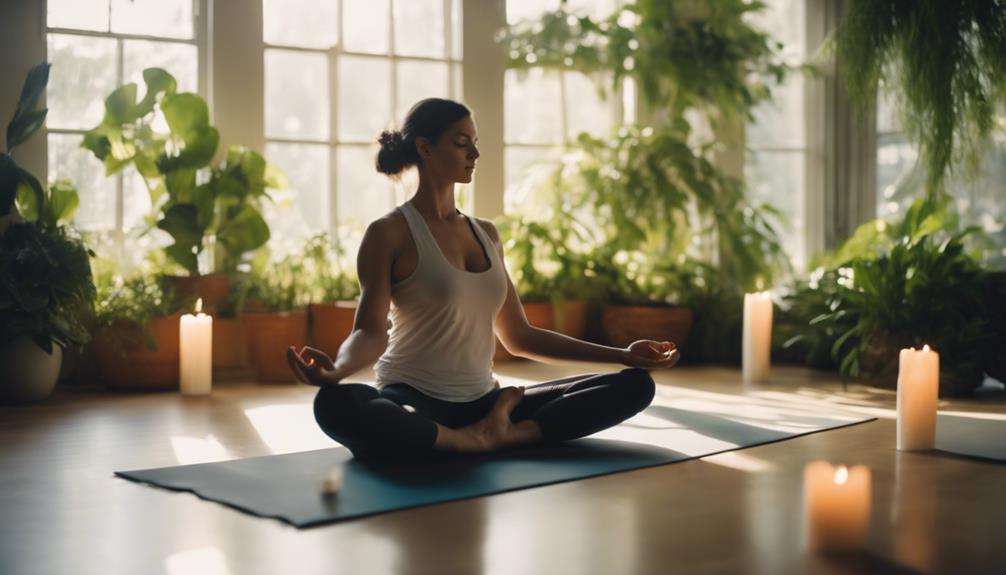How Thick Are Yoga Mats

Yoga mats are an essential piece of equipment for anyone looking to practice yoga, whether you’re a beginner or an experienced yogi. One of the most frequently asked questions among yoga enthusiasts is: how thick are yoga mats? The thickness of your yoga mat can significantly impact your practice, comfort, and overall experience. In this comprehensive guide, we will explore the different thicknesses of yoga mats, their benefits, and how to choose the right one for your practice.
The Standard Thickness of Yoga Mats
Most yoga mats on the market today come in a standard thickness of around 1/8 inch (3 mm) to 1/4 inch (6 mm). This range is designed to provide a balance between cushioning and stability. A mat that is too thick may cause instability when balancing in poses, while a mat that is too thin can lead to discomfort on hard surfaces. Understanding the standard thickness will help you make an informed decision when purchasing your mat.
Thinner Yoga Mats: Benefits and Ideal Uses
Thinner yoga mats, typically measuring around 1/16 inch (1.5 mm) to 1/8 inch (3 mm), are favored by practitioners who prioritize stability and portability. These mats are particularly beneficial for styles of yoga that require precise balance, such as Ashtanga or Iyengar. The added stability can enhance your performance in standing poses and inversions. Additionally, thinner mats are lightweight and easy to carry, making them ideal for yogis who travel frequently or attend classes outside the home.
Medium Thickness Yoga Mats: A Versatile Choice
Medium thickness yoga mats, usually around 1/4 inch (6 mm), offer a versatile option for many practitioners. These mats strike a balance between cushioning for comfort and stability for balance. They are suitable for various yoga styles, including Vinyasa, Hatha, and Restorative yoga. The added cushioning can provide relief during long sessions and is beneficial for those with joint sensitivities or injuries. If you’re unsure of what thickness to choose, a medium thickness mat is often a safe bet for a wide range of practices.
Related Posts:
Thicker Yoga Mats: Comfort for Sensitive Joints
For those with sensitive joints or for practitioners who enjoy restorative yoga, thicker mats measuring 1/2 inch (12 mm) or more are available. These mats provide exceptional cushioning and support, making them ideal for gentle yoga styles, prenatal yoga, or therapeutic practices. However, it’s essential to note that while the extra thickness can enhance comfort, it may also compromise stability in balancing poses. Therefore, thicker mats are best suited for those who prioritize comfort over precision in their practice.
Material Matters: How It Affects Thickness
When considering how thick yoga mats are, it’s important to also think about the material used in their construction. Common materials include PVC, TPE, natural rubber, and jute. Each material has its unique properties that can influence the overall thickness and feel of the mat. For instance, natural rubber mats tend to be thicker and offer excellent grip, while PVC mats are typically thinner and more portable. Understanding the relationship between material and thickness can help you find a mat that meets your needs and preferences.
Choosing the Right Thickness for Your Yoga Practice
When it comes to choosing the right thickness for your yoga mat, it’s crucial to consider your practice style, physical needs, and personal preferences. If you practice yoga primarily for relaxation and meditation, a thicker mat may be beneficial. However, if you engage in more dynamic styles of yoga that require balance and precision, a thinner mat may be more suitable. Additionally, consider your practice environment; if you often practice on hard floors, a thicker mat can provide additional cushioning. Ultimately, the right thickness will enhance your overall yoga experience.
Care and Maintenance of Your Yoga Mat
Maintaining your yoga mat is essential to ensure its longevity and performance, regardless of thickness. Regular cleaning helps prevent the buildup of sweat and bacteria, which can affect the grip and hygiene of your mat. Most mats can be cleaned with a mixture of mild soap and water. Additionally, it’s essential to store your mat properly by rolling it up and keeping it in a cool, dry place. By taking care of your mat, you can ensure that it remains a reliable companion in your yoga journey.
Final Thoughts: Finding Your Perfect Yoga Mat Thickness
In conclusion, the question of how thick are yoga mats is vital for anyone looking to enhance their yoga practice. With options ranging from thin to thick, understanding the benefits and drawbacks of each thickness will empower you to make an informed choice. Whether you prioritize stability, comfort, or versatility, there is a yoga mat thickness that will meet your needs. Take the time to assess your practice style and personal preferences, and don’t hesitate to try out different mats to find the one that feels just right for you. A well-chosen yoga mat can truly elevate your practice and lead to a more fulfilling yoga experience.